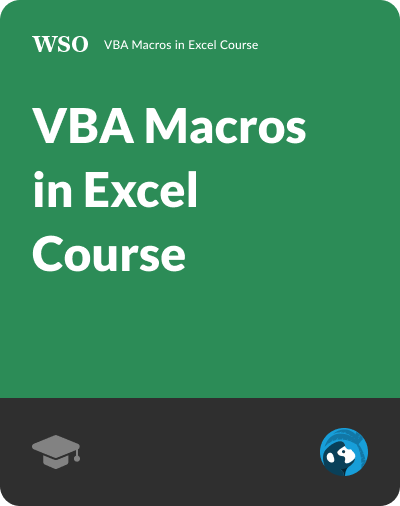Asset and Liability Management (ALM)
A strategic methodology used by companies and institutions for risk management, financial planning, and optimizing investment returns
What Is Asset and Liability Management (ALM)?
Asset and Liability Management (ALM) is a method that businesses and institutions use to handle risks, plan their finances, allocate assets, and adjust to regulatory and capital frameworks.
The main objective is to match assets with liabilities, minimizing financial risks in case of imbalances between the two. This approach aims to maximize investment returns and enhance overall efficiency.
Common financial risks addressed include interest rate, liquidity, currency, and capital market risks. ALM continually monitors and manages these risks, ensuring they remain within acceptable limits for the organization.
Concerning assets, ALM oversees a company's total wealth through acquisition, maintenance, and investments. The three primary investment types are equities, fixed incomes (bonds), and cash equivalents.
Individual investors often seek professional asset management companies because they may lack the expertise and resources required to achieve the same high investment returns as these companies.
On the other hand, asset managers usually have broad market expertise and pooled funds or aggregation of capital as one single portfolio. By using investment strategies such as diversification, they can achieve higher returns for their clients. Asset managers usually charge a fee, commonly as a percentage of total assets under management (AUM).
Companies providing such services are known as "buy-side" because they help with investing; meanwhile, investment banks and stockbrokers are known as "sell-side" as they sell investment services to the buy-side and other investors.
Key Takeaways
- Asset and Liability Management (ALM) aims to match assets with liabilities, minimizing financial risks and maximizing investment returns to enhance overall efficiency.
- Asset management includes passive management (index and ETFs), active investment management (human-manipulated portfolios), and robo-advisor management (algorithm-based portfolios).
- Risks associated with ALM include interest rate risk (bond devaluation), liquidity risk (impact on asset prices), and currency risk (gains and losses in currency values).
Asset Management
Recognition, quantification, reduction of risks, greater efficiency, and profitability are common goals of asset management. However, there is no general framework to apply to a firm; the firm must design one that fits its needs the most --such as specific objectives, risk levels, and regulatory constraints.
ALM oversees the firm's entire balance sheet, meaning it involves coordination between different departments, which is challenging and time-consuming. Types of asset management:
1. Passive management
Index and exchange-traded funds are examples of passive management as they follow a benchmark index and replicate their performance. As a result, the investment does not outperform or underperform the index, and the fund has no manual intervention.
2. Active investment management
This type of investment is manipulated by humans, usually by a portfolio manager, who charges approximately 1% of the assets under management.
The manager aims to outperform the market through various financial means, including diversification and stock picking. As a result, there are usually greater returns and risks associated with an actively managed investment.
3. Robo-advisor management
This is where algorithms and Modern Portfolio Theory (MPT) come into play as they manage client portfolios instead of real human beings. The fee is generally lower than what a portfolio manager charges and usually ranges between 0.25% to 0.5% of the assets under management.
Understanding Risks
There are a variety of risks associated with asset and liability management, and below are some common examples.
The probability of unexpected interest rate fluctuations can result in an asset devaluation. Interest rate is a primary factor of a bond's price, so this risk is often associated with bonds and other fixed-income assets rather than stocks.
Interest rate and asset value are in an inverse relationship. When the interest rate rises, the asset's value (bond) falls as people have their eyes on higher interest-rate financial products, and when demand falls, price falls respectively.
2. Liquidity risk
Based on Wikipedia, liquidity is an economic concept involving the convertibility of assets and obligations. For instance, market liquidity is relatively high if an individual or firm can quickly purchase or sell an asset without causing a drastic change in the asset's price.
On the contrary, an asset's price must be lowered in an illiquid market to sell it faster. The most common liquid asset is cash because it can exchange goods instantly at their face value.
Currency risk is the unpredictable changes of gains and losses of one currency value concerning another.
Currency risk is most frequently experienced by institutions involved in international trades, and hedge funds are used to mitigate such risk by using futures, options, and other derivatives.
Hedging is one way to reduce currency risk. Another common way to prevent such risk is investing in stable and rising currencies while reviewing a country's inflation - a high debt usually means incoming inflation.
A low debt-to-gross GDP ratio usually relates to a rising currency. Equity risk - while known for its higher return, the stock market is also associated with higher risk and fluctuations depending on supply and demand.
Equity risk premium (ERP) is the difference between the return on a market portfolio or a stock with average market risk and the risk-free rate of return.
Liability management
In accounting, liability is what you owe to others financially. To understand liability, you first need to know that it is another component on the balance sheet, along with assets. The balance sheet is called T-account as it is T-shaped.
While assets are a party's property owned financially, liabilities are what the party owes to others, for example, mortgages and loans (for banks, loans are under assets because banks use loans and interests to earn money).
Asset management is provided in different forms, such as hedge funds, mutual funds, and private equity.
The numerical difference between liability and assets is the party's net worth. A positive net worth indicates a healthy, profitable business, and a negative net worth suggests bankruptcy.
Liabilities can be currency or non-current, short-term or long-term; a current liability is expected to be repaid within a year, while a non-current one is expected to be repaid in a longer time, usually more than a year.
In a legal aspect, liability is equivalent to a legal or regulatory risk the business faces. Therefore, liability management transactions are done to reduce the risk. Examples include debt repurchases, tender offers, private exchange offers, and consent solicitations.
More Relevant Concepts and Applications
There are some relevant concepts and applications related to ALM, and two examples below are asset coverage ratio and cash flow.
1. Asset coverage ratio
It is calculated by (assets - intangible assets - current liabilities - short term debt) / total debt. It measures how a firm repays or covers its debts by selling its tangible assets. The higher the ratio, the lower the risk present to the firm.
2. Cashflow
It is the amount of money flowing in and out of business, or the net cash amount, usually shown on the business's financial statement. Received cash is inflow, and cash spent is outflow, by definition. Cash flow usually comes from operation, investment, and financing.
Like the asset coverage ratio, the cash flow coverage ratio measures the business's ability to pay off its liabilities using cash flows. It is calculated by operating cash flows / total debt.
Matching assets and liabilities: Some common examples include matching in insurance, corporations, and investment portfolios.
In insurance firms, matching premiums, deductibles, and coinsurance are critical as they significantly affect assets and liability balance.
In corporations, the decision to use existing assets to make new investments or to pay off liabilities requires a matching between assets and liabilities, so an optimized plan can be generated to use return on investment to cover the liabilities.
In investment portfolios, liability-driven investing is often used in pension funds. It is a strategy that matches future asset sales and income streams against the timing of expected future expenses.
This strategy looks at the liability side of investment instead of the asset side.









or Want to Sign up with your social account?